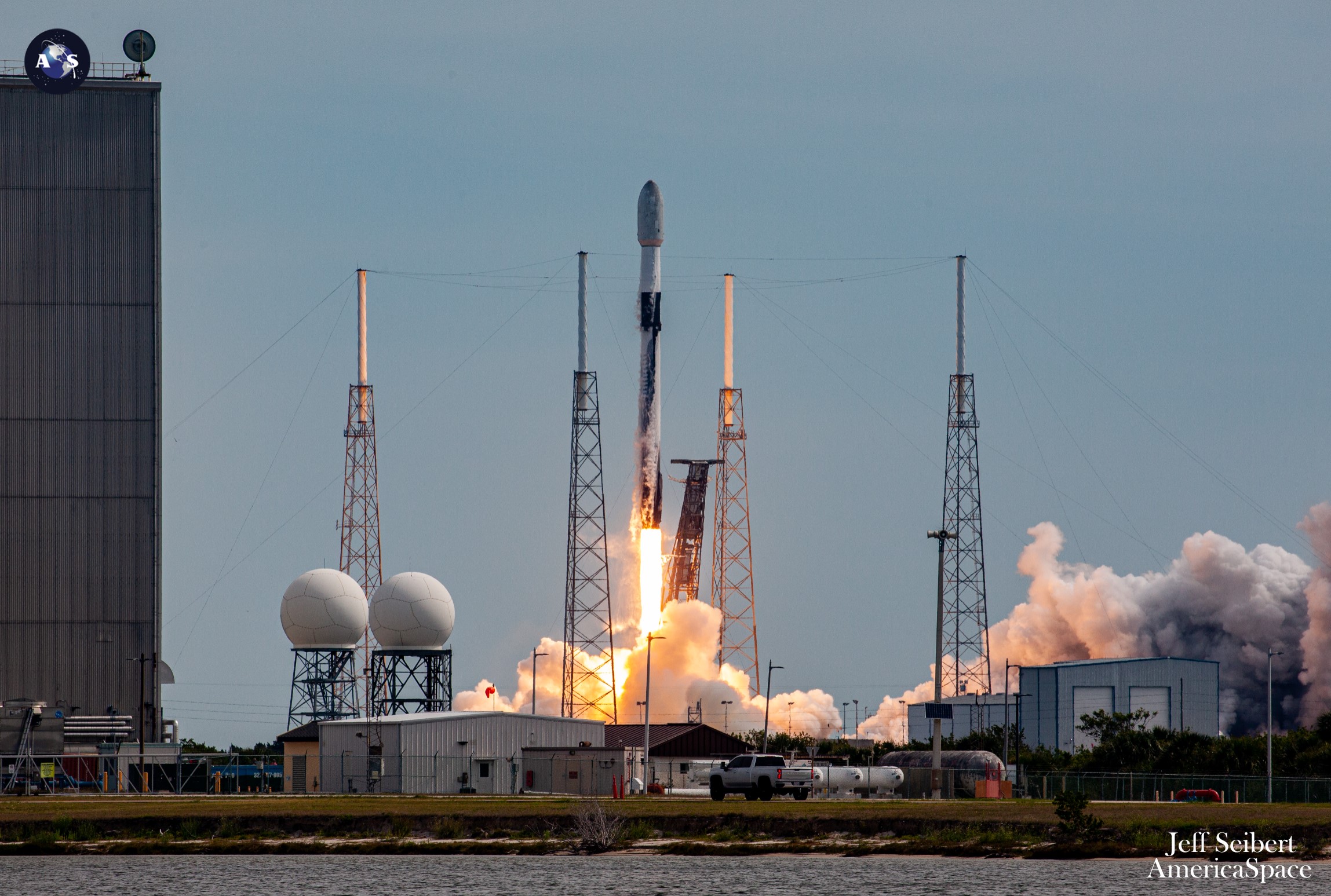
After a comparatively sparse first half of April, launch-wise, SpaceX successfully flew its 25th mission of the year on Wednesday, lofting 21 second-generation Starlink internet communications satellites safely into low-Earth orbit. Liftoff of the B1073 core—making her third flight of 2023 and her eighth overall—occurred at 10:31 a.m. EDT from storied Space Launch Complex (SLC)-40 at Cape Canaveral Space Force Station, as the Falcon 9 smoothly powered off the pad on the third of four T-0 opportunities for today.
Weather conditions were highly favorable, with an 85-percent probability of acceptability on Wednesday, deteriorating to 75 percent for a quartet of backup tries on Thursday morning. “High pressure centered across the northern Gulf Coast will shift northeast into the Deep South, reaching the Western Atlantic on Wednesday,” noted the 45th Weather Squadron at Patrick Space Force Base in its L-1 update on Tuesday morning.
“While the weather will remain pleasant overall, mid-level vorticity in the Gulf of Mexico will create a weak shortwave trough south of the ridge,” it added. “This will bring increased mid- and upper-level cloud cover through the Florida Peninsula Wednesday, along with breezy winds out of the northeast.” All told, that was expected to yield two concerns: a breach of the Thick Cloud Layers Rule and perhaps a violation of Liftoff Winds.
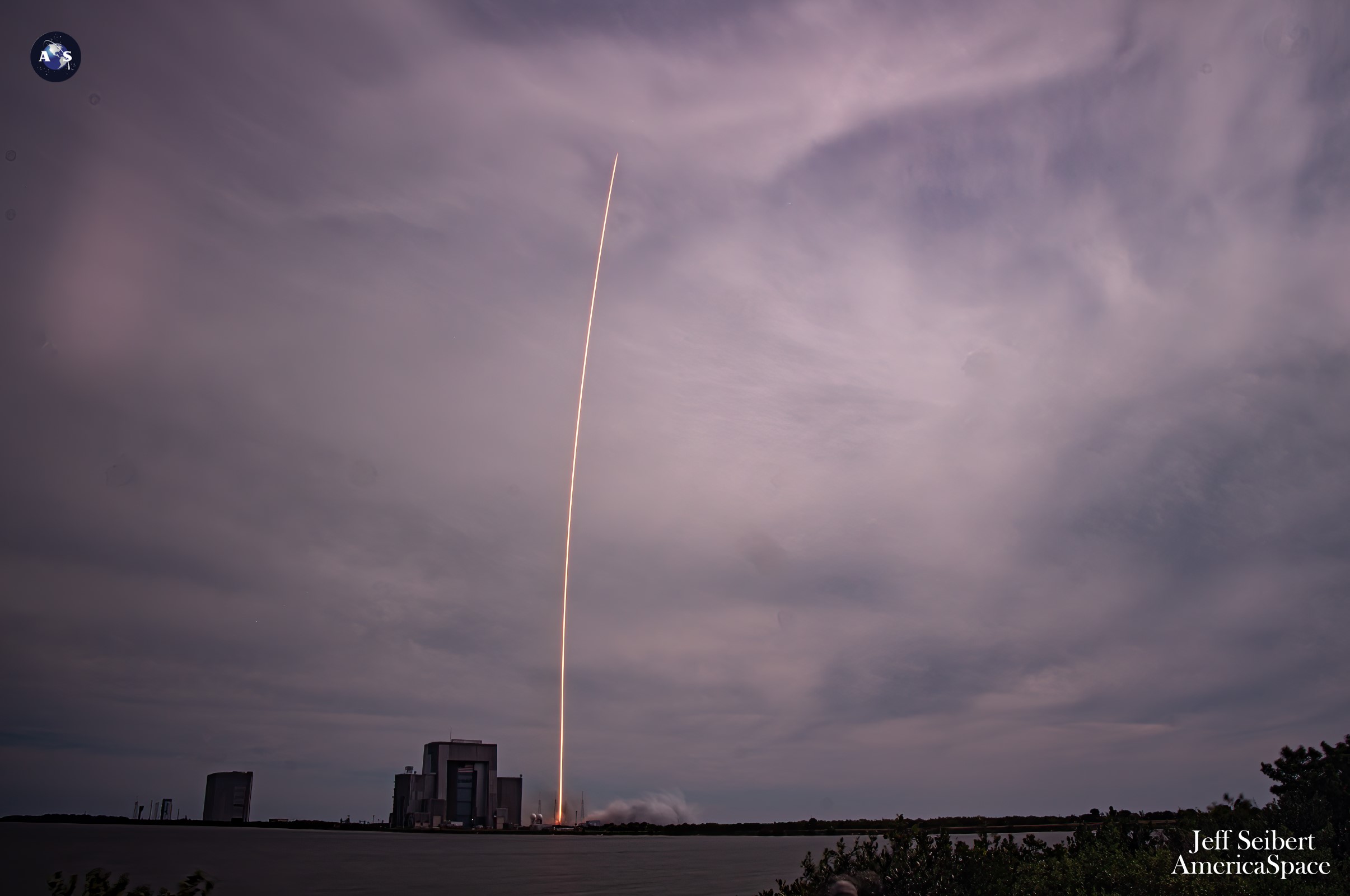
In support of launch, the Autonomous Spaceport Drone Ship (ASDS), “A Shortfall of Gravitas”, put to sea out of Port Canaveral last Saturday, bound for a recovery spot some 400 miles (640 kilometers) downrange in the Atlantic Ocean. Introduced into SpaceX’s drone-ship fleet in midsummer 2021, and first used to recover a Falcon 9 core late the following August, ASOG has now successfully retrieved 34 boosters, including eight so far in 2023 alone, most recently less than two weeks ago.
And the booster which flew this morning’s mission has already sealed not only her reusability credentials, but also her status as one of the “healthiest” Falcon 9s in SpaceX’s burgeoning fleet. B1073 entered service last May and including today’s launch has now lofted 178 Starlinks, plus the SES-22 and Amazonas Nexus geostationary communications satellites and a lunar-bound mission with Japan’s Hakuto-R lander, the United Arab Emirates (UAE) Rashid rover and NASA’s water-ice-seeking Lunar Flashlight.
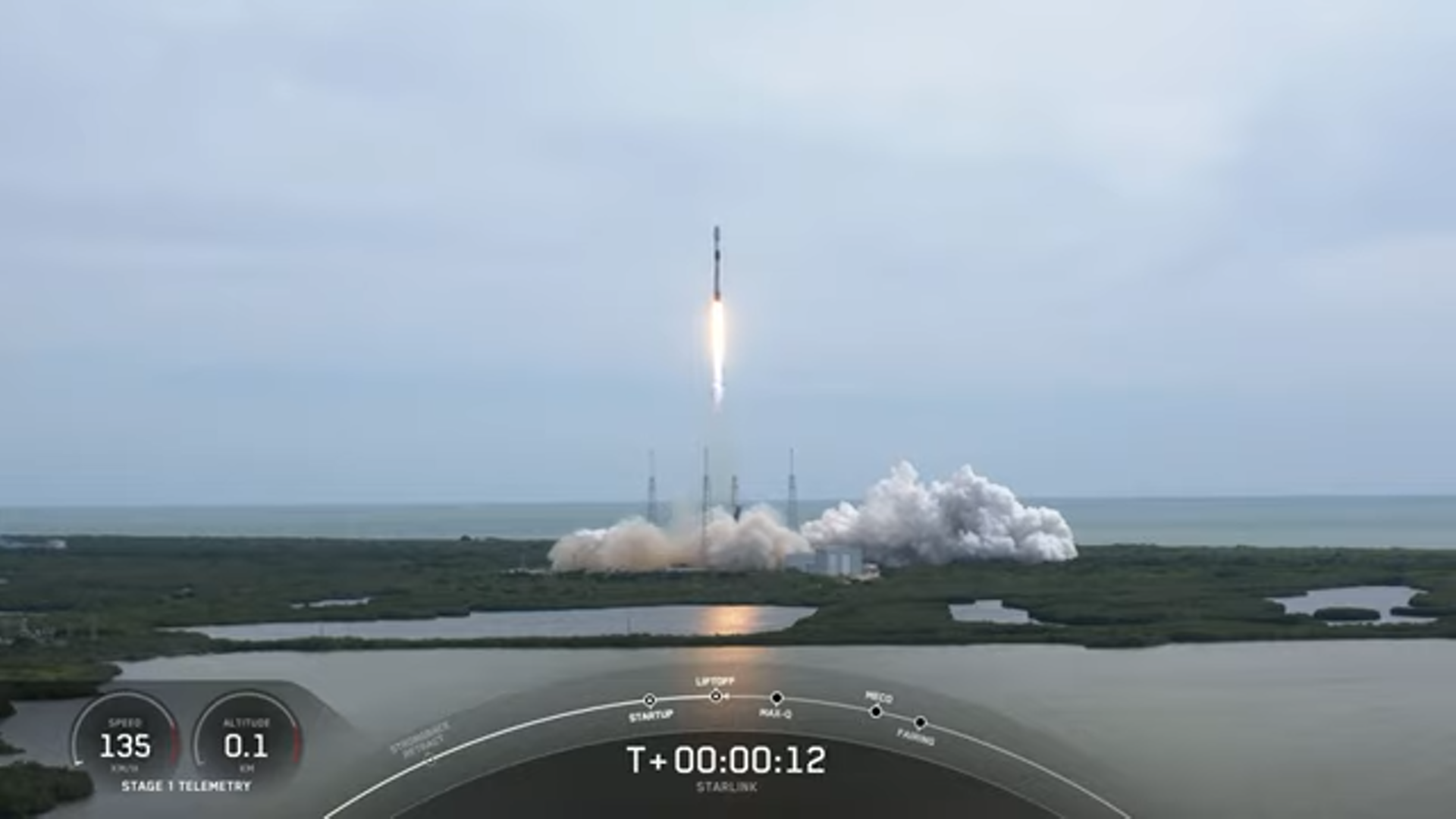
Just last month, she also became the most flight-experienced Falcon 9 ever to lift a payload—human or cargo—to the International Space Station (ISS). Making her seventh trek uphill, she carried the CRS-27 Cargo Dragon aloft under the second-round Commercial Resupply Services (CRS2) contract between NASA and SpaceX. That mission ended last weekend, when the Cargo Dragon splashed down off the Florida Coast to wrap up a highly successful month-long stay at the orbital outpost.
In comments made at the CRS-27 pre-flight press conference, NASA’s Phil Dempsey, transportation integration manager for the ISS Program, explained that there exists a set of “criteria that we use…to evaluate the components of a booster”, as part of the decision process in selecting one for flight. He added that the decision is “based on the assessment of the health of a booster” and not on its number of prior missions.
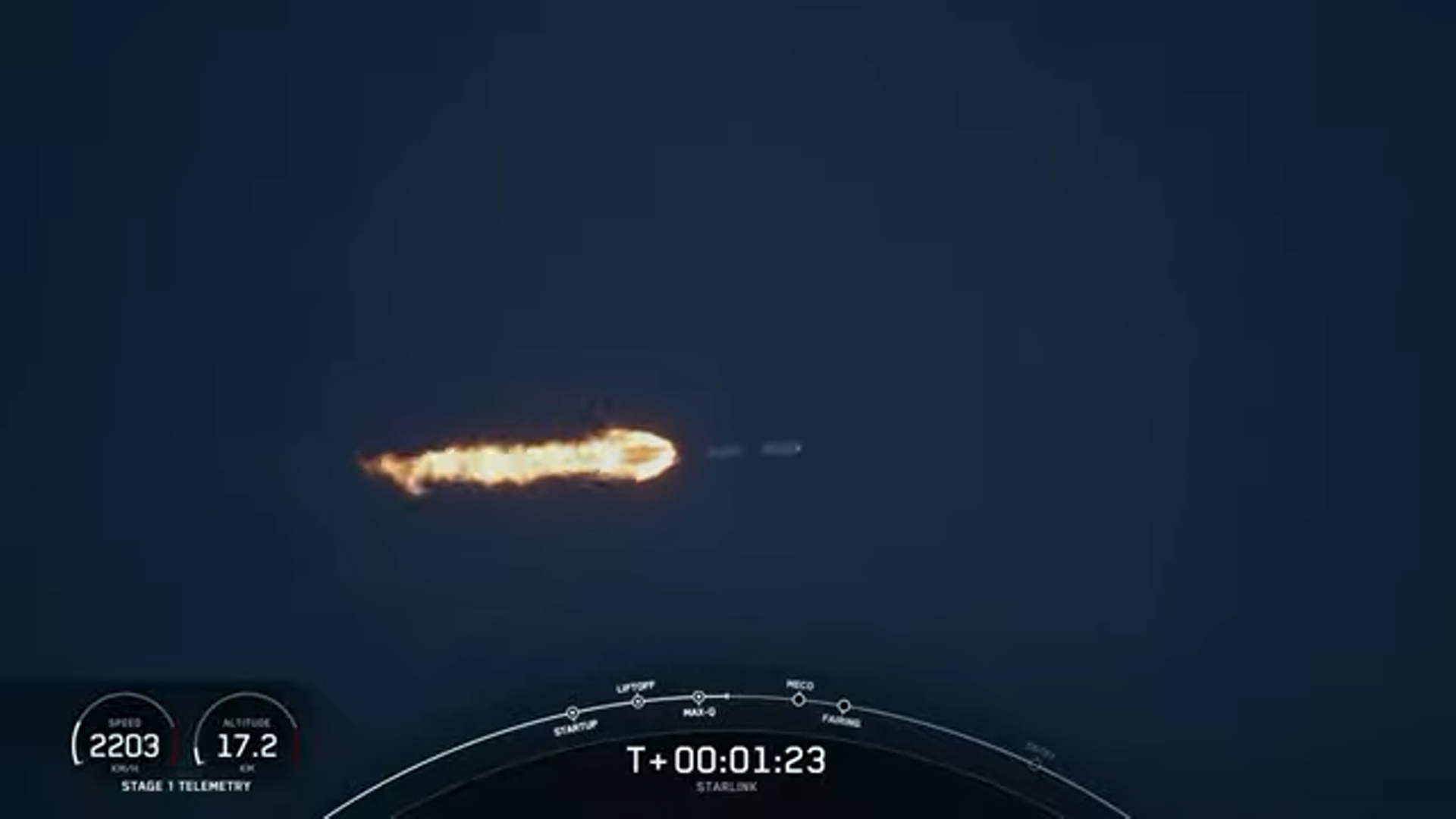
Flying for the third time in 2023, and with only 35 days having passed since she last flew, B1073 is certainly cementing her status as one of SpaceX’s frequent flyers. Yesterday, SpaceX identified four T-0 points for Wednesday’s opening launch attempt, with the first at 8:50 a.m. EDT and three others spaced apart at roughly 50-minute intervals: at 9:47 a.m. EDT, 10:31 a.m. EDT and 11:28 a.m. EDT. Four more backup opportunities were provided on Thursday morning in the event of a 24-hour scrub.
Although SpaceX noted that systems and weather remained good for launch, the Hawthorne, Calif.-headquartered organization aimed initially for the second T-0 point at 9:47 a.m. EDT, then for the third at 10:31 a.m. EDT, opting for the best possible weather conditions. B1073 sprang uphill right on the opening of the third T-0, her nine Merlin 1D+ engines powering the 230-foot-tall (70-meter) stack aloft.
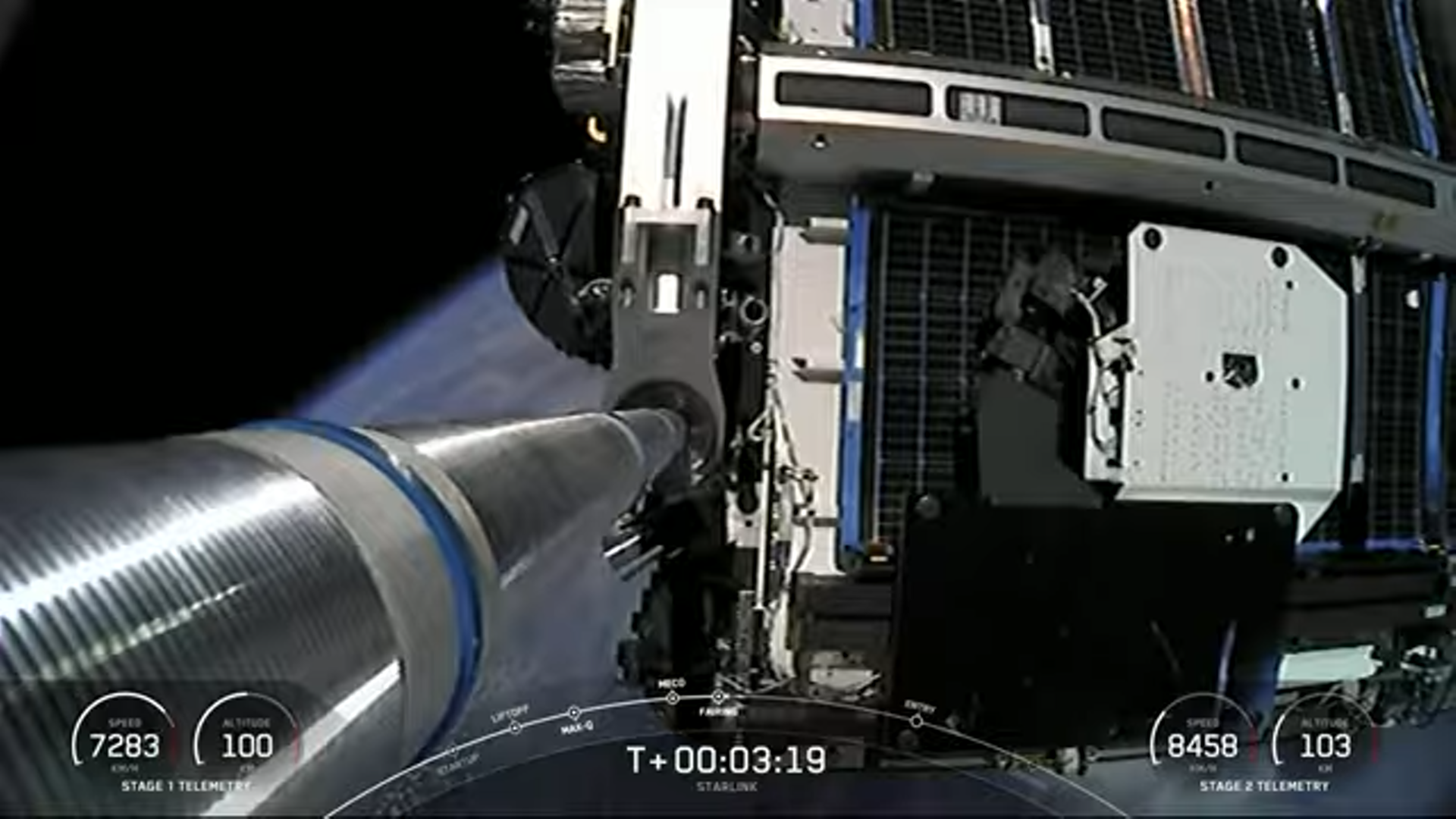
The core stage separated, as planned, at 2.5 minutes into ascent, returning to a smooth ASOG landing, after which the Merlin 1D+ Vacuum engine of the second stage ignited for a customary six-minute “burn” to deliver the second batch of 21 Starlink “V2 Mini” satellites into low-Earth orbit. Deployment of the satellites was completed shortly after 11:30 a.m. EDT, about an hour after liftoff.
Between May 2019 and this morning, more than 4,200 production-design Starlinks have been launched into orbit, facilitating high-speed and low-latency internet provision across more than 50 sovereign nations and international markets spanning North and South America, Europe, Asia, Oceania and Africa. In the last few weeks alone, Haiti, Ecuador and El Salvador have officially signed up to Starlink.
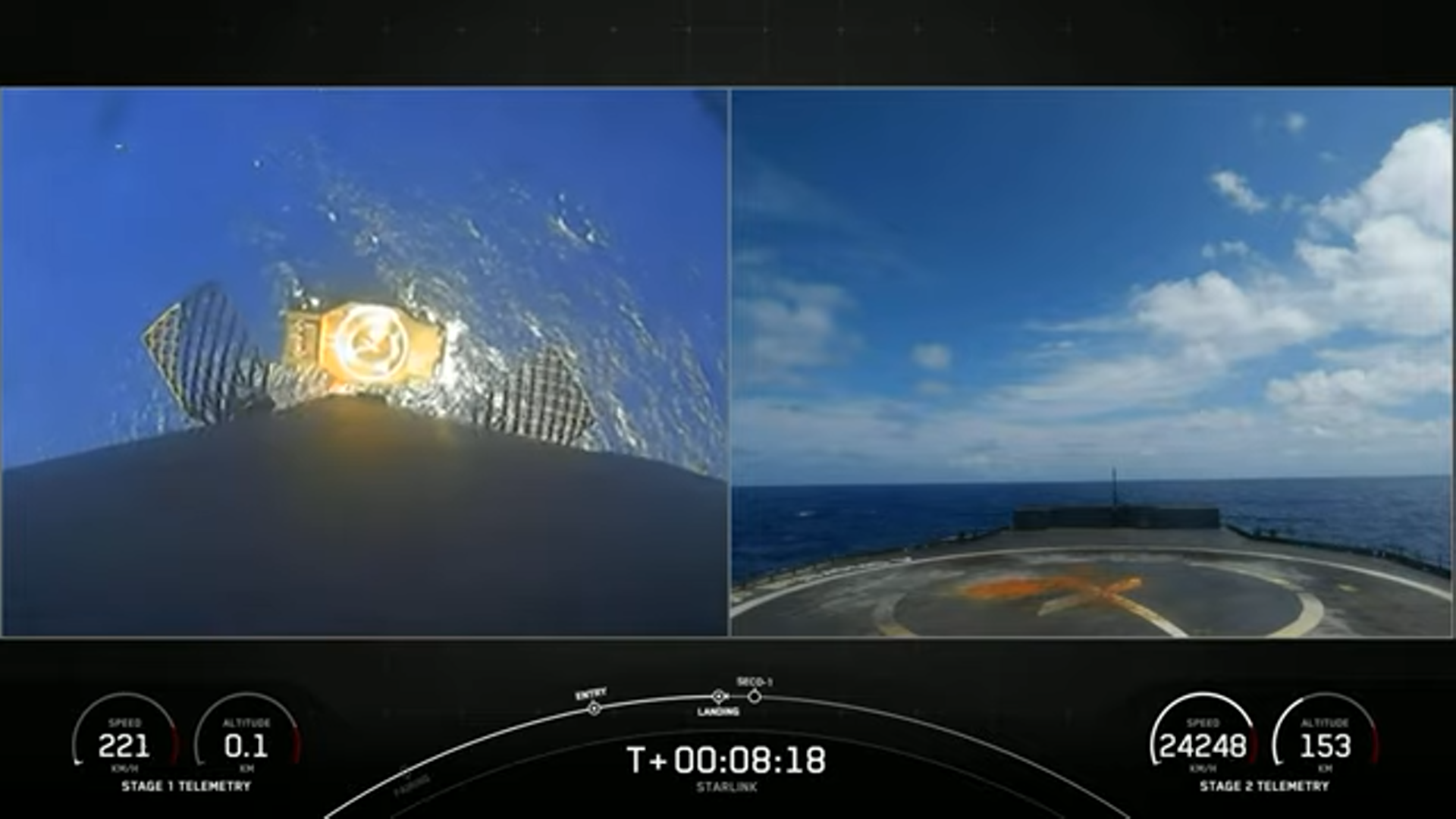
This morning’s launch marked the second flight of SpaceX’s downsized V2 Mini satellites, with three to four times greater “usable” bandwidth than their predecessors. “They represent a step forward in Starlink capability,” SpaceX explained last month.
“V2 Minis include key technologies—such as more powerful phased-array antennas and the use of E-Band for backhaul—which will allow Starlink to provide 4x more capacity per satellite than earlier iterations,” it added. “Among other enhancements, V2 Minis are equipped with new argon Hall thrusters for on-orbit maneuvering.”
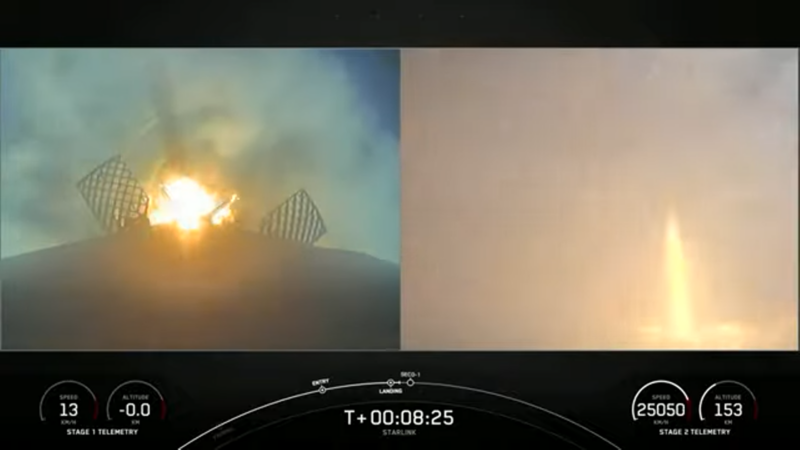
The first 21 V2 Minis rode uphill on a Falcon 9 in late February, making today’s launch the second flight of these new miniaturized satellites. It also marked SpaceX’s 25th mission of the year, averaging a cadence of one launch every 4.2 days since January.
Fifteen rockets—including a Falcon Heavy core and twin side-boosters—have supported those 25 launches, three of which, including B1073, have logged three flights apiece since the start of the year. Seven missions ended with on-point touchdowns on landing pads at either the Cape or Vandenberg Space Force Base, Calif., with 19 boosters alighting on drone ships in the Atlantic or Pacific Oceans and only the center core of January’s Falcon Heavy having been expended so far, due to the requirements of its heavyweight USSF-67 payload for the U.S. Space Force.
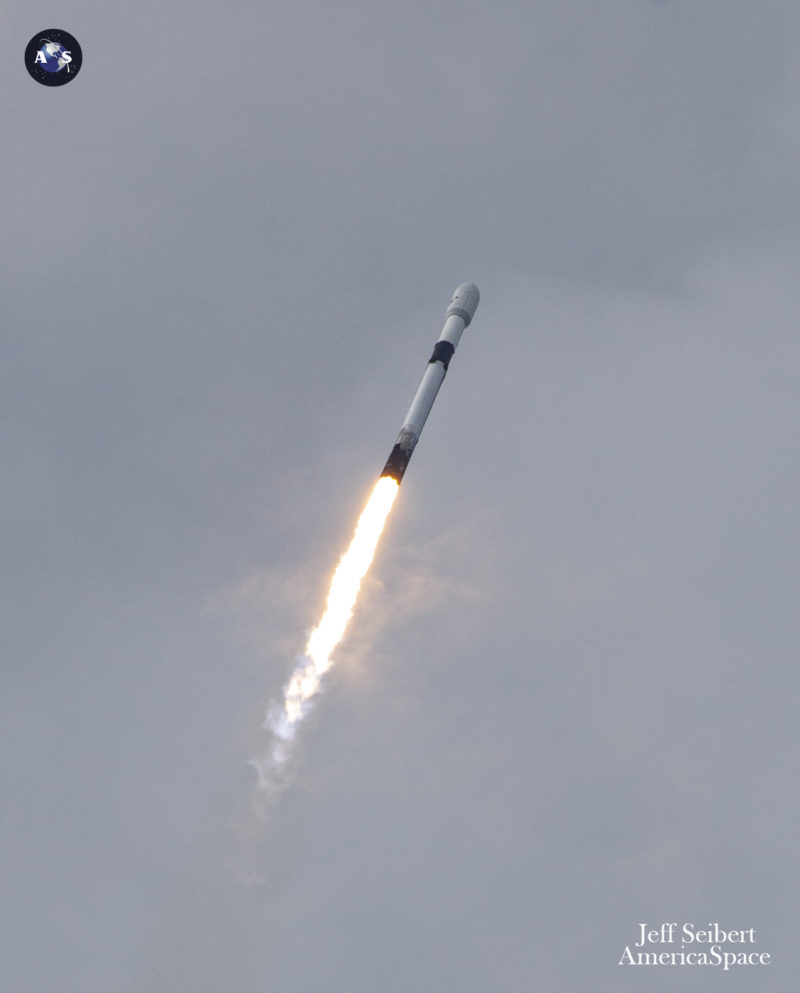
And to put this number of missions into perspective, in 2022 it took SpaceX until the third week of June to pass 25 launches in a single year. In 2021, it took until mid-November to reach the magical number, and only as recently as 2020 did SpaceX first surpass a quarter-century of flights across an entire calendar year.
With a personal-best-beating eight Falcon 9s having been launched in March, April has proven somewhat quieter, with “only” four missions flown so far by the month’s third week, a notable downturn from five launches by the same point in January and February and six launches by the same point last month. In addition to today’s Starlink haul, SpaceX has lofted the inaugural Tranche-0 of the Transport and Tracking Layer (TTL) for the Space Development Agency (SDA), the heavyweight Intelsat 40e geostationary communications satellite with NASA’s “hosted” Tropospheric Emissions: Monitoring of Pollution (TEMPO) and last weekend’s 51-payload Transporter-7 “rideshare” mission.
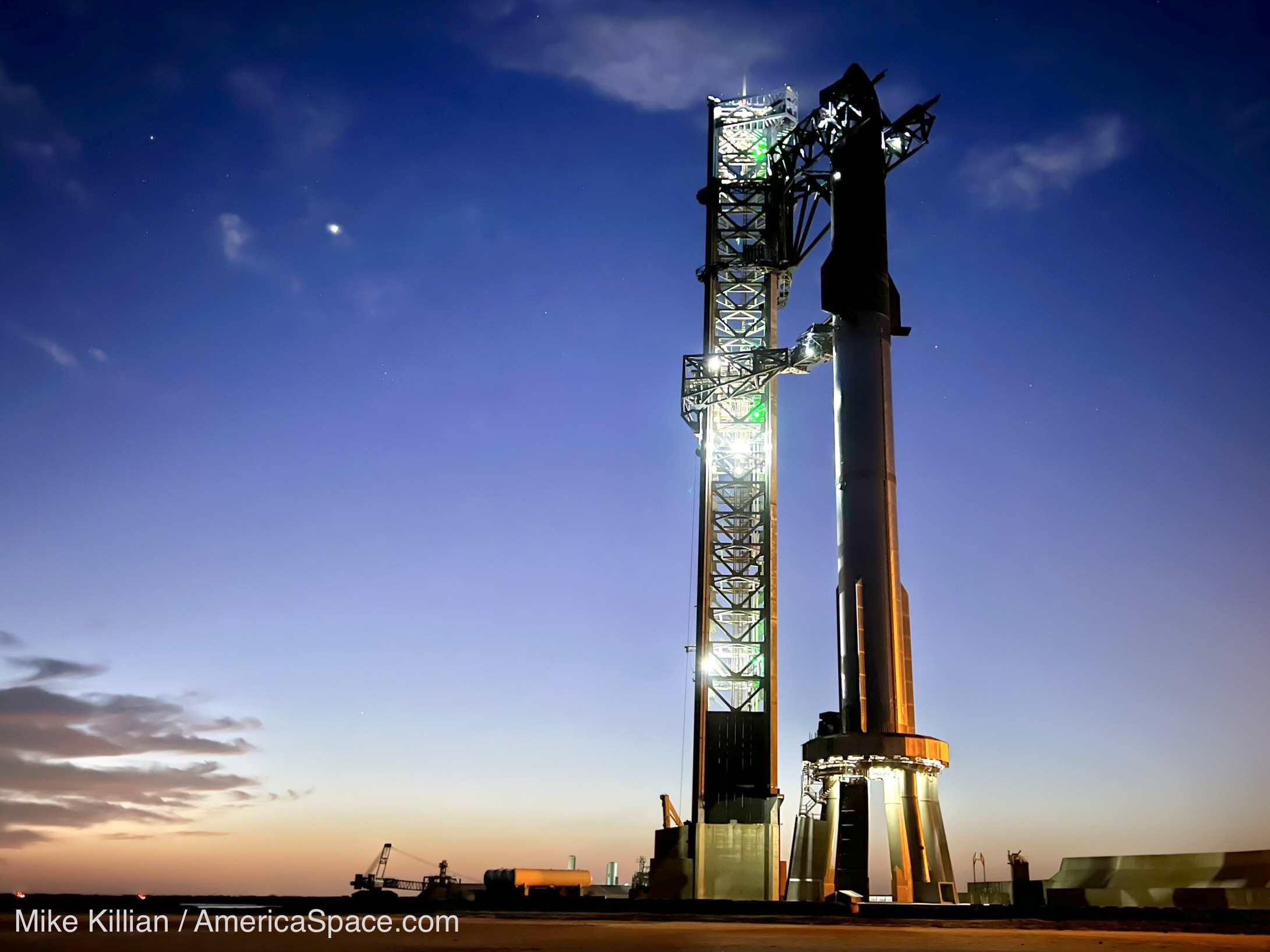
Attention now turns to Starbase at Boca Chica, on Texas’ southernmost tip, where the gigantic Starship/Super Heavy stack stands ready for its first fully integrated orbital test flight, as early as Thursday. Scrubbed on Monday morning due to a first-stage pressurant issue, the long-awaited maiden flight is targeting a 62-minute “window” which opens at 8:28 a.m. CDT and closes at 9:30 a.m. CDT.
The 394-foot-tall (120-meter) booster will power out of Starbase under the 16.7 million pounds (4.5 million kilograms) of thrust from its 33 Raptor engines, fueled by liquid methane and liquid oxygen. If successful, the maiden launch will catapult the Starship/Super Heavy into the record books as the tallest and most powerful rocket ever flown.
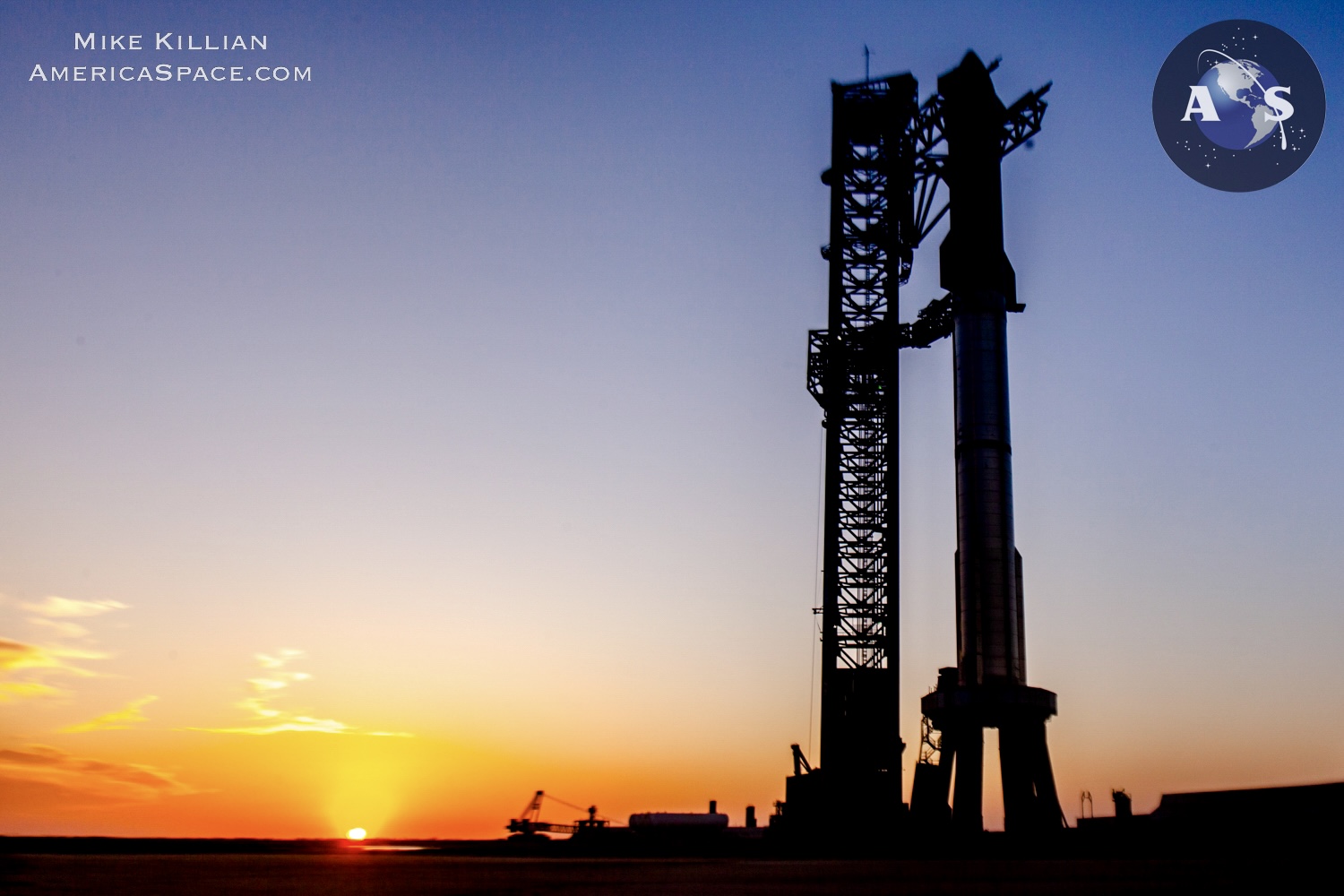
The Super Heavy will power the stack aloft for the opening 2.5 minutes of flight, before separating in a manner not unlike that of a Falcon 9 core stage, albeit on the most extreme of steroids. The 230-foot-tall (70-meter) Super Heavy will execute a 55-second “boost-back” burn, slow to transonic speeds at 7.5 minutes after liftoff, then execute a 23-second “landing” burn to achieve a vertical splashdown in the Gulf of Mexico, about 20 miles (32 kilometers) off the Texas Coast, some eight minutes into the mission.
Meanwhile, after separation from the Super Heavy, the Starship will ignite its own suite of Raptor engines for 6.5 minutes, before shutting down and coasting three-quarters of the way around Planet Earth for the next 68 minutes. Like the Super Heavy, it is not intended for recovery on this maiden test flight and will splash down in the Pacific Ocean, to the northwest of Kauai in Hawaii, less than 90 minutes after launch.
FOLLOW AmericaSpace on Facebook and Twitter!
Missions » Commercial Space » Starlink »




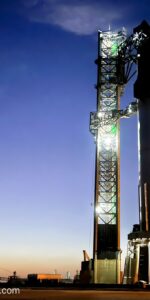
5 Comments
5 Pings & Trackbacks
Pingback:Weather Looks Iffy for Post-Midnight Falcon 9 Launch - AmericaSpace
Pingback:SpaceX Wraps Up 200th Booster Landing, Second Launch in 14 Hours - AmericaSpace
Pingback:A Tale of Three Launch Sites: SpaceX Targets Falcon 9 Launch Tonight, Looks Ahead to Falcon Heavy & Starship Flights - AmericaSpace
Pingback:As Starship Aims for NET Thursday, Falcon 9, Falcon Heavy Prepare ... - AmericaSpace - Digi90
Pingback:A Tale of Three Launch Sites: SpaceX Targets Falcon 9 Launch ... - AmericaSpace - Digi90